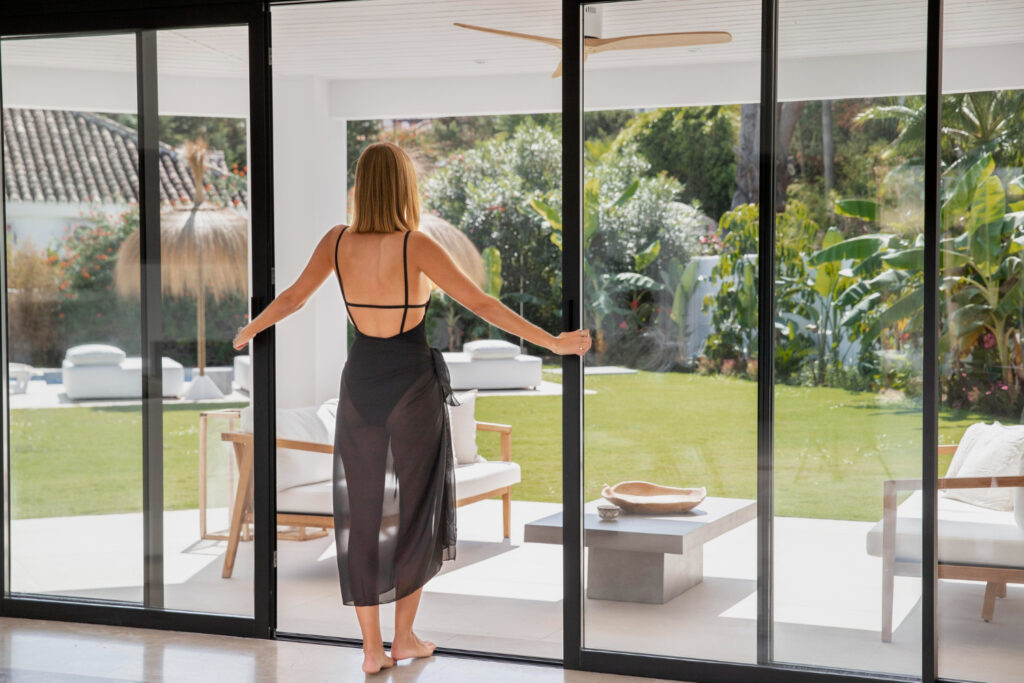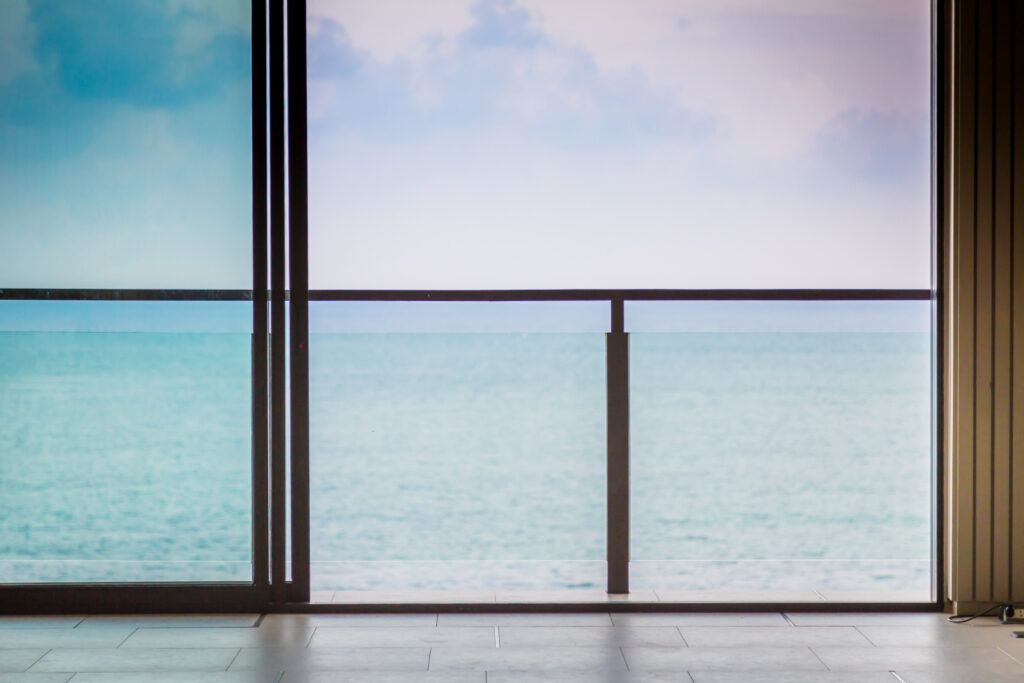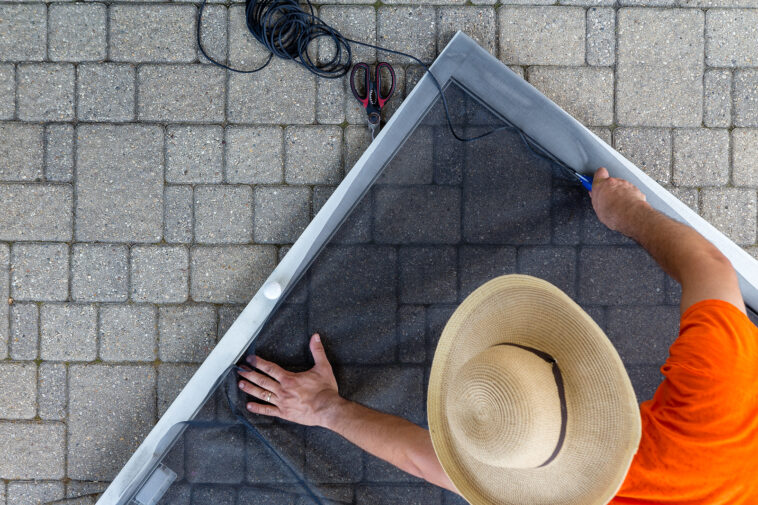Are you yearning to make the most out of your outdoor living area? Would you like to relish the joys of the outdoors without having to endure pesky insects, the scorching sun, or the prying eyes of neighbors? DIY Manual Retractable Patio Screens offer an ingenious solution to these dilemmas. This comprehensive guide will delve deeply into the world of DIY Manual Retractable Patio Screens.
We'll explore their numerous benefits, discuss the various types available, walk you through meticulous planning steps, provide a detailed list of materials and tools required, and guide you through a step-by-step installation process. Furthermore, we'll emphasize the importance of regular maintenance to ensure the longevity of your patio screens.
Whether you're a seasoned DIY enthusiast or a novice looking to enhance your outdoor space, this in-depth article is tailored to equip you with the knowledge and confidence needed to transform your patio into a comfortable and functional extension of your home.
What is Patio Screens?
Patio screens, often referred to as outdoor screens or retractable patio screens, are versatile additions to your outdoor living space. These screens are designed to enhance the functionality and comfort of your patio or deck by providing various benefits that cater to your specific needs.
At their core, patio screens consist of a frame and a screen material that can be extended or retracted as desired. The frame can be mounted to the exterior of your home, attached to posts, or placed on a free-standing structure. The screen material itself is made from materials like fiberglass, aluminum, or solar mesh, which offer different levels of durability and functionality.
Read also our post on Easy DIY Power Plan
Benefits of DIY Manual Retractable Patio Screens
When considering the installation of DIY Manual Retractable Patio Screens, it's crucial to understand the multitude of advantages they bring to the table. Let's explore these benefits in greater detail:
- Privacy: DIY Manual Retractable Patio Screens provide an invaluable sense of privacy. They shield your outdoor space from the prying eyes of neighbors and passersby, granting you the freedom to relax, entertain, or dine without the intrusion of onlookers.
- Sun Protection: These screens offer effective protection against the harsh rays of the sun. By filtering out harmful UV rays, they not only prevent sunburn but also create a more comfortable and shaded environment on scorching summer days.
- Insect Shield: Patio screens act as a formidable barrier against pesky insects such as mosquitoes and flies. This insect control feature ensures that you and your guests can enjoy your outdoor space without the constant annoyance of buzzing and biting insects.
- Temperature Control: DIY Manual Retractable Patio Screens play a pivotal role in regulating the temperature on your patio. During the hot months, they provide shade and keep your space cooler, while in colder seasons, they can help retain warmth and extend your outdoor enjoyment.
- Increased Property Value: Installing retractable screens can boost the overall appeal and functionality of your outdoor space. This aesthetic and practical enhancement has the potential to increase your property's value, making it a worthwhile investment.
- Customization: DIY Manual Retractable Patio Screens are available in a wide array of styles, materials, and colors. This flexibility allows you to tailor your patio screens to match your home's architectural style and cater to your personal preferences.
Having delved into the myriad advantages of DIY Manual Retractable Patio Screens, let's continue our journey by exploring the various types of screens you can choose from.

Types of DIY Manual Retractable Patio Screens
When it comes to DIY Manual Retractable Patio Screens, you'll discover a diverse array of options, each designed to cater to your specific needs, budget, and outdoor space's design. Let's delve deeper into the primary types of screens available, providing you with valuable insights for your patio enhancement project:
Roll-Up Screens
Roll-up screens represent one of the most prevalent and versatile choices in the realm of retractable patio screens. These screens feature a roll of screen material that can be extended and retracted either manually or electronically. They are particularly popular for their ability to provide shade and protection against pesky insects, making them a favored selection for many homeowners seeking a comfortable outdoor living space.
Drop-Down Screens
If your goal is to enclose your patio or create a private sanctuary, drop-down screens are an excellent option. Designed to be mounted vertically, these screens offer exceptional versatility. You can adjust them to different heights, allowing you to customize your outdoor space according to your specific needs, whether it's for shade, privacy, or both.
Retractable Awnings with Screens
For those looking to address multiple needs simultaneously, retractable awnings with integrated screens offer a convenient solution. These awnings can extend to provide shade while simultaneously deploying screens to keep insects at bay. This dual functionality makes them a practical choice for anyone seeking a versatile and multipurpose outdoor screen solution.
Sliding Screens
In larger patio areas or spaces with a more open feel, sliding screens come into play. These screens consist of multiple panels that can be easily slid open or closed. This design allows you to create an open, airy environment or transform your patio into an enclosed sanctuary, offering flexibility that caters to various occasions and preferences.
Motorized vs. Manual Screens
Another essential consideration when choosing retractable patio screens is the mode of operation. You have the option to select between motorized and manual screens. Motorized screens offer the convenience of remote control operation, allowing you to adjust them effortlessly with the touch of a button. On the other hand, manual screens require physical effort for extension and retraction but are often more budget-friendly, providing a cost-effective solution for those who prefer a hands-on approach.
Selecting the right type of patio screen depends on various factors, such as the size of your patio, the level of protection required, and your budget. As we move forward, we will guide you through the essential planning steps necessary to embark on your DIY project successfully.
Planning Your Project
Planning is the cornerstone of any successful DIY project, and when it comes to installing DIY Manual Retractable Patio Screens, thorough preparation is paramount. Here, we provide an in-depth guide to the crucial steps necessary for a well-considered and successful project:
Measure Your Space Accurately
Begin your project by meticulously measuring the dimensions of your patio. Knowing the precise width and height of the area to be covered is essential for selecting the right-sized screen and avoiding costly errors during installation. Take note of any irregularities or obstacles that may affect the screen's placement.
Determine the Purpose of Your Screens
Consider the primary purpose of your patio screens. Are you seeking privacy, sun protection, insect control, or a combination of these factors? Understanding your specific goals will significantly influence the type of screen that best suits your needs. Different types of screens offer varying levels of light filtration, UV protection, and insect resistance.
Set a Realistic Budget
Establish a clear budget for your project, factoring in the cost of materials, tools, and any additional expenses. Keep in mind that the price of DIY Manual Retractable Patio Screens can vary widely depending on the type and quality you choose. Having a well-defined budget ensures that your project stays on track financially.
Research Local Regulations and Permits
Before diving into your project, conduct research on local regulations and permits. Check with your local municipality or homeowners' association to determine if any specific guidelines or permits are required for installing patio screens. Ensuring compliance with local codes and regulations is crucial to avoid potential legal complications down the road.
Choose Materials and Colors Carefully
Select the screen material and frame color thoughtfully, considering both aesthetics and functionality. Common screen materials include fiberglass, aluminum, and solar mesh, each offering distinct advantages in terms of durability and sun protection. The frame color should harmonize with your home's exterior and align with your personal style, ensuring a seamless integration into your outdoor space.
Account for Wind and Weather Conditions
If your region experiences strong winds, intense sun exposure, or extreme weather conditions, you may need to invest in sturdier screens and proper anchoring systems. Ensuring the screens can withstand the elements is crucial for their durability and longevity. Consult with experts or local suppliers to determine the most suitable materials and anchoring solutions for your specific climate.
Read also our post on DIY Repair Parts
Materials and Tools You'll Need
A successful DIY Manual Retractable Patio Screens project requires a comprehensive list of materials and tools. Here's what you'll need to ensure a smooth installation:
Materials:
- Retractable Patio Screen Kit: This kit typically includes the screen material, frame components, and necessary hardware.
- Anchoring and Mounting Hardware: Secure your screen frame to your patio's structure with appropriate anchors and mounting hardware.
- Screws and Bolts: These are essential for attaching various components of your screen frame securely.
- Screw Anchors (if necessary): Depending on your patio's construction, you may need screw anchors to ensure a stable installation.
- Silicone Caulk (for sealing gaps): Use silicone caulk to seal any gaps and prevent water infiltration.
- Level: A level is vital for ensuring that your screen frame is installed squarely and level.
- Measuring Tape: Accurate measurements are crucial for a precise fit.
- Safety Equipment: Safety first! Be sure to have gloves and safety glasses on hand to protect yourself during the installation.
Tools:
- Drill and Drill Bits: A drill is essential for creating pilot holes and securing screws.
- Screwdriver: You'll need a screwdriver for attaching various components.
- Wrench: A wrench comes in handy for tightening nuts and bolts.
- Saw (if cutting is required): Depending on your patio's dimensions, you may need a saw to trim the frame components to size.
- Pencil or Chalk (for marking): Accurate marking ensures precise placement of your screen frame.
- Ladder or Scaffolding (for elevated installations): If your installation involves heights, a sturdy ladder or scaffolding is a must.
Before you embark on the installation process, ensure that you have all the necessary materials and tools readily available. Adequate preparation is key to a successful outcome. With your planning, materials, and tools in order, you're ready to proceed with the step-by-step installation guide.

Step-by-Step Installation Guide
Follow this detailed step-by-step guide for the successful installation of DIY Manual Retractable Patio Screens:
Step 1: Assemble the Screen Frame
Begin the installation process by carefully laying out the components of your screen frame kit. It is essential to refer to the manufacturer's instructions for precise assembly guidelines. During this step, pay close attention to ensuring that the frame is perfectly square and level, as this will impact the overall functionality and appearance of your patio screen.
Step 2: Mount the Frame Securely
Once the frame is assembled, position it in your chosen location on the patio. Take extra care to ensure that it is level and plumb, using appropriate tools if necessary. Mark the exact locations for the mounting holes, and then proceed to drill pilot holes. Finally, securely attach the frame to your patio's structure using the recommended anchors and screws. Properly anchoring the frame is crucial to its stability and longevity.
Step 3: Attach the Screen Material
Stretch the screen material over the frame, taking great care to ensure it is stretched tautly and free of wrinkles. Utilize the clips or fasteners provided in your kit to securely attach the screen to the frame. A well-fitted screen is essential for both functionality and aesthetics.
Step 4: Test the Operation
Test the retractable screen's operation by carefully extending and retracting it multiple times. This step helps ensure that the screen operates smoothly and without any hitches. If you encounter any issues, make the necessary adjustments to the tension or alignment to guarantee optimal performance.
Step 5: Seal Any Gaps to Prevent Water Infiltration
Inspect the edges of the frame and the areas around the mounting points for any gaps or potential points of water infiltration. Apply a generous amount of silicone caulk to seal these gaps effectively. This sealing step is vital to keep your patio dry and comfortable, especially during wet weather conditions.
Step 6: Final Checks for Safety and Functionality
Conduct a final examination of the frame's stability, ensuring that it is firmly fastened to your patio structure. Verify the screen's functionality one last time, checking for ease of use and smooth operation. By performing these final checks, you can ensure that your DIY Manual Retractable Patio Screen is installed securely and ready to provide you with years of enjoyment.
By following this meticulous step-by-step installation guide, you'll be able to successfully install your DIY Manual Retractable Patio Screens, granting you access to the many benefits they offer. However, the work doesn't stop here—regular maintenance is crucial to ensuring the longevity of your screens, as we'll discuss in the next section.
Maintenance Tips for Longevity
Proper maintenance is the key to extending the lifespan of your DIY Manual Retractable Patio Screens and ensuring they continue to serve you well over the years. Here are essential maintenance tips to keep in mind:
Regular Cleaning
Periodically clean the screen material to remove accumulated dirt, dust, and debris. Use a soft brush or a vacuum cleaner with a brush attachment for this purpose. Keeping your screens clean not only improves their appearance but also ensures their functionality.
Lubrication
If your screens feature moving parts, such as hinges or tracks, it's essential to apply lubricant as recommended by the manufacturer. This lubrication helps maintain the smooth operation of your screens.
Inspect for Damage
Routinely inspect the screen material for any signs of wear and tear, including tears, holes, or damage caused by weather or other factors. Promptly repair or replace damaged sections to preserve the effectiveness of your screens.
Keep Hardware Tight
Over time, the screws and bolts that hold the frame in place may become loose due to usage and exposure to the elements. Regularly check and tighten any loose hardware to ensure the stability and security of your screens.
Winter Storage
If you live in an area with harsh winters and plan to store your screens during the off-season, it's advisable to remove them and store them indoors. This protects the screens from potential damage caused by snow, ice, and extreme cold.
By diligently following these maintenance guidelines, you can significantly extend the lifespan of your DIY Manual Retractable Patio Screens and continue to enjoy their benefits for years to come.
Conclusion
In conclusion, DIY Manual Retractable Patio Screens are a valuable addition to any outdoor living space. Their myriad benefits, including enhanced privacy, sun protection, insect control, temperature regulation, increased property value, and customization options, make them a wise investment for homeowners seeking to maximize their outdoor enjoyment.
Whether you're looking to relax in the shade, entertain guests, or simply immerse yourself in the natural beauty of your surroundings, DIY Manual Retractable Patio Screens provide a versatile solution. With the comprehensive information and guidance provided in this article, you are well-prepared to embark on your DIY project and create a comfortable and functional extension of your home.
Investing in DIY Manual Retractable Patio Screens not only enhances your quality of life but also adds value to your property. The combination of privacy, comfort, and aesthetic appeal makes these screens a versatile addition that you'll appreciate for years to come.
So, if you're ready to extend your living space and create an inviting outdoor oasis, consider installing DIY Manual Retractable Patio Screens. With careful planning, proper materials, and the step-by-step installation guide, you'll be on your way to transforming your patio into a haven of relaxation and enjoyment.
Sources
https://www.energy.gov/energysaver/energy-efficient-window-coverings




